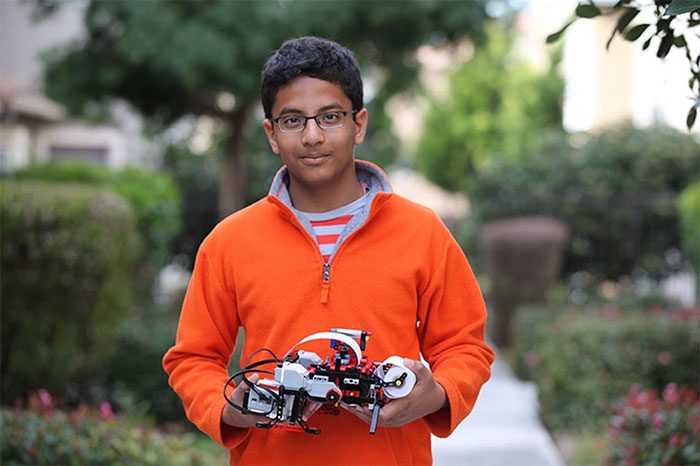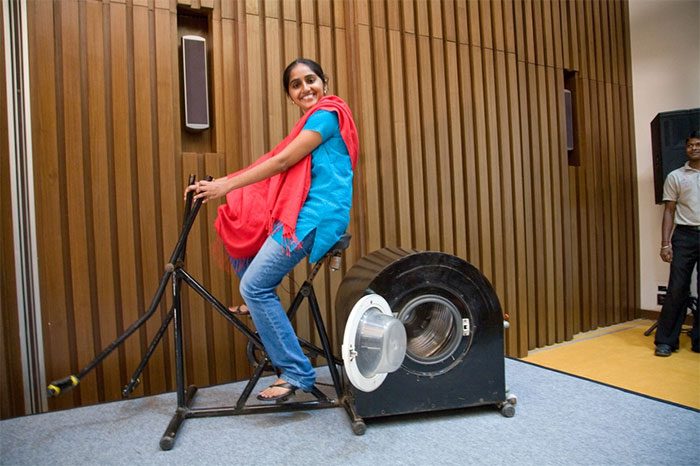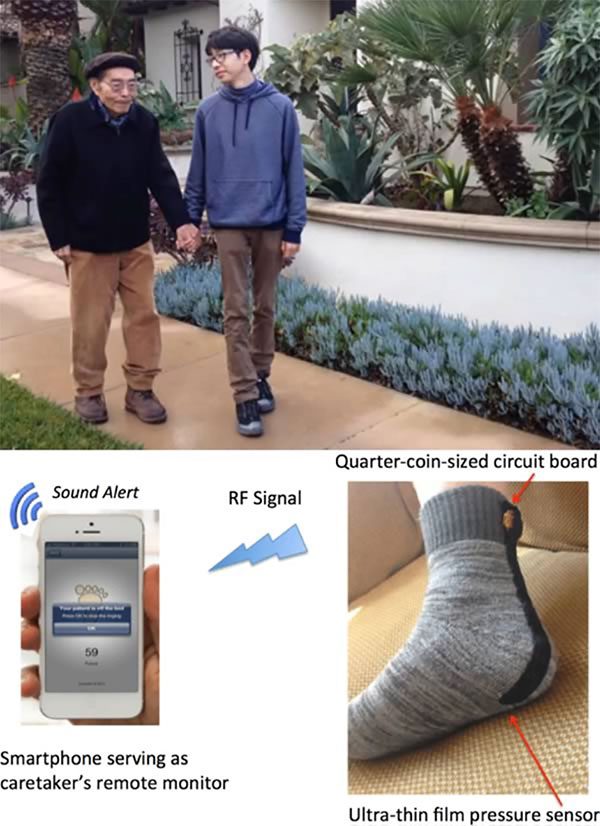Jack Andraka, a 17-year-old from Maryland, USA, invented a tool for detecting pancreatic cancer. This invention won the Intel ISEF Gordon E. Moore Award worth $75,000. It is a simple yet highly effective test strip.
1. Braille Printer

Shubham Banerjee.
At the top of this list of inventions is Shubham Banerjee, an Indian-American. In 2014, at the age of 13, Shubham began creating a machine called Braigo V1.0 using materials from a Lego assembly kit combined with some electronic components and software. Shubham utilized the Lego Mindstorms EV3 and around $5 worth of hardware from Home Depot for this project. Indeed, Braigo V1.0 is significantly cheaper than other Braille printers on the market, which typically cost over $2,000 each. Shubham founded the startup Braigo Labs in 2015 together with his parents.
2. Foot-Pedal Washing Machine

Student Remya Jose.
Remya Jose, a 14-year-old student from India, invented this device after her mother fell ill and asked her to help with the laundry. Initially, Jose researched how conventional washing machines work to replace its mechanical operation with a manual one. Subsequently, Jose and her father used some recycled bicycle parts to create a device that saves time and energy. Clothes are placed inside a drum along with hot water and detergent, soaked for 10 minutes. Then, the user pedals to rotate the clothes inside the drum like riding a bicycle. This is a simple and clever invention for families in rural areas that have limited access to traditional washing machines.
3. Clean Water Generation and Electricity Production Solution

Cynthia Sin Nga Lam.
Cynthia Sin Nga Lam, a Vietnamese-Australian student, stood out at the Google Science Fair 2014 with her invention, the H2Pro machine. H2Pro works on the principle of using sunlight to break down contaminants in water while separating hydrogen gas, which can be converted into electrical energy. This machine addresses both clean water and electricity generation with a single solution.
4. Self-Sanitizing Door Handle

Sun Ming Wong and King Pong Li.
Sun Ming Wong, 17, and King Pong Li, 18, from Hong Kong, invented a product that helps keep dangerous bacteria at bay: a self-sanitizing door handle. This product has been hailed as revolutionary in disease control and hygiene. The idea emerged when they noticed numerous objects that people touch daily, such as door handles, shopping cart handles, and balcony railings, harbor a lot of bacteria. Thus, they sought a way to create a surface that continuously self-sanitizes.
After extensive research, Sun and King discovered that Titanium Dioxide is an excellent antibacterial agent. Consequently, they ground this compound into a fine powder to coat the door handles. As a result, the door handles achieve a 99.8% antibacterial efficiency. Notably, the cost of this product is only $13 each.
5. Device to Alert about Wandering Dementia Patients

Kenneth Shinozuku and his device for alerting wandering dementia patients.
Kenneth Shinozuku, a 15-year-old from New York, USA, won a $50,000 science award for his wearable sensor device called Wearable Sensor (WS). It can send alerts via mobile devices when dementia patients leave their beds. Kenneth’s invention was inspired by his grandfather, who has Alzheimer’s disease, particularly when he often gets out of bed at midnight and injures himself.
6. Pancreatic Cancer Detection Tool

Jack Andraka.
In 2011, Jack Andraka, 17, from Maryland, USA, invented a tool for detecting pancreatic cancer. This invention won the Intel ISEF Gordon E. Moore Award worth $75,000. It is a simple yet highly effective test strip. To develop the test strip, Jack Andraka first researched the culprit, a type of protein found in higher levels in patients with pancreatic cancer. Out of 8,000 proteins, he ultimately selected mesothelin, a protein produced excessively in cases of pancreatic cancer.
The next step was for Jack to collaborate with Professor Anirban Maitra at Johns Hopkins University to test mesothelin. After a long and arduous process, Jack finally developed the aforementioned test strip. It is 168 times faster and 400 times more sensitive than traditional methods, and notably, it is cost-effective.


















































